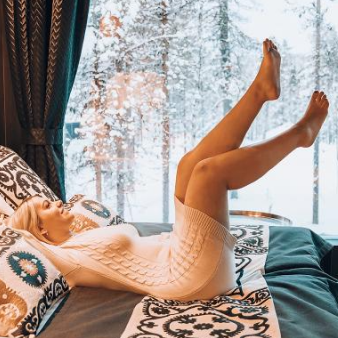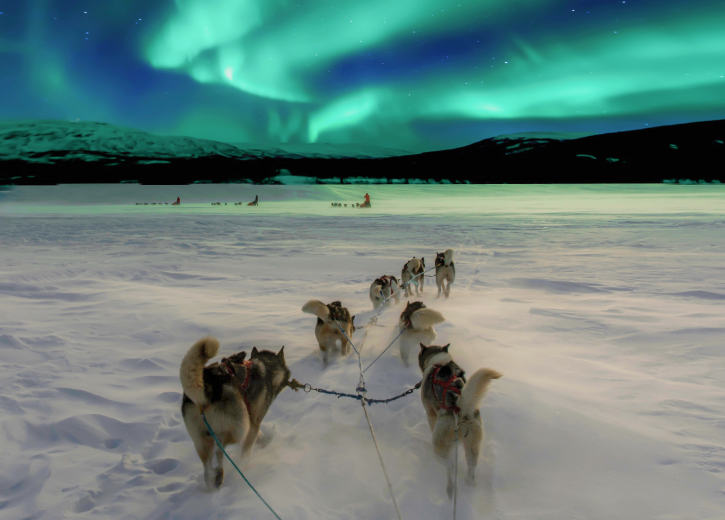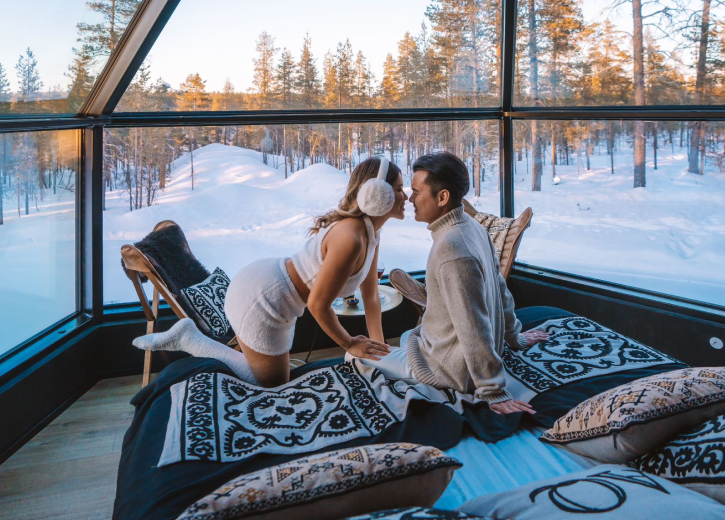Lapland’s winter temperatures typically range from -10°C to -20°C between December and March, with January and February being the coldest months when temperatures can plummet to -30°C or lower. This Arctic region in northern Finland experiences a polar night period when the sun doesn’t rise above the horizon for several weeks, contributing to the cold. Despite these frigid temperatures, Lapland’s winter climate creates ideal conditions for aurora viewing, with clear, cold nights often providing spectacular Northern Lights displays. With proper clothing and preparation, visitors can comfortably enjoy all the winter magic Lapland has to offer.
Understanding Lapland’s winter climate
Lapland, stretching across northern Finland, Sweden, Norway, and part of Russia, sits largely within the Arctic Circle, giving it a unique subarctic climate. What makes Lapland’s winter truly distinctive is the combination of reliable snow cover, extreme cold, and the fascinating light phenomena that occur at these northern latitudes.
The region experiences a polar night phenomenon known locally as “kaamos,” when the sun doesn’t rise above the horizon for weeks during midwinter. This creates a magical blue twilight during daytime hours that bathes the snow-covered landscape in ethereal light. The extensive darkness also creates perfect conditions for viewing the Northern Lights.
Unlike many winter destinations, Lapland’s cold is typically a dry cold, which many visitors find more comfortable than the damp cold experienced in more temperate climates. The air quality is exceptionally pure, and on clear days, visibility can extend for kilometres across the pristine snow-covered fells and forests. This combination of factors creates a winter environment that feels almost otherworldly compared to more temperate regions.
How cold does Lapland typically get in winter?
During winter months in Lapland, temperatures commonly range between -10°C and -20°C, though visitors should be prepared for occasional cold snaps where temperatures can drop to -30°C or even lower. These extreme temperatures are more common in the northernmost parts of Finnish Lapland, particularly in areas like Kilpisjärvi and Utsjoki.
The temperature variations across Lapland can be significant. Southern Lapland areas like Rovaniemi might experience milder temperatures around -5°C to -15°C, while northern regions can be considerably colder. The temperature gradient becomes more pronounced during winter months, with a noticeable difference between coastal and inland areas.
Despite these cold temperatures, the low humidity in Lapland means that the cold often feels less biting than higher temperatures in damper climates. Many visitors are surprised to find that with proper clothing, -15°C in Lapland can feel more comfortable than 0°C in their home countries where humidity levels are higher.
Wind chill is another important factor to consider. On calm days, even very cold temperatures can be quite comfortable, while windy conditions can make moderate cold feel significantly more intense. Sheltered forest areas typically feel warmer than open spaces like frozen lakes or treeless fells.
When is the coldest month in Lapland?
January and February are typically the coldest months in Lapland, with average temperatures hovering between -12°C and -16°C, though readings of -20°C to -30°C are not uncommon during cold spells. These months represent the heart of the Arctic winter, when the polar night has passed but daylight hours remain limited.
December usually marks the beginning of the deep winter period but is often slightly milder than January and February. By March, temperatures begin a gradual climb, though winter conditions persist with averages still well below freezing, typically between -5°C and -15°C.
Interestingly, the coldest periods often coincide with clear, still weather conditions that create stunning winter scenery and excellent aurora viewing opportunities. These cold, clear nights occur when high-pressure systems bring stable weather to the region, pushing clouds away and allowing heat to escape from the snow-covered ground.
Temperature patterns can vary significantly from year to year. Some winters bring sustained periods of extreme cold, while others may see more fluctuation with occasional milder spells. Climate change has introduced more variability to Lapland’s winter temperatures in recent years, though the season remains reliably cold.
Does the extreme cold affect aurora viewing in Lapland?
Contrary to what some might expect, the extreme cold in Lapland often enhances aurora viewing opportunities rather than hindering them. Clear, cold nights typically provide the optimal conditions for witnessing the Northern Lights, as cold air tends to be drier and less cloudy, offering better visibility of the night sky.
The relationship between temperature and aurora visibility is primarily indirect—cold temperatures themselves don’t cause auroras, but the stable, high-pressure weather systems that bring the coldest nights also bring clear skies. Since cloud cover is the main obstacle to viewing auroras, these frigid, clear nights often provide spectacular light shows.
Many visitors find that watching auroras in comfort is the best approach, especially during the coldest months. Viewing the Northern Lights through a glass ceiling while staying warm indoors offers the perfect balance—you can enjoy the spectacle without battling the elements.
For those who venture outdoors for aurora hunting, the extreme cold requires proper preparation. Dressing in appropriate layers and limiting exposure time during the coldest periods ensures safety while maximizing your chances of witnessing this natural phenomenon. Even at -25°C, a short time outdoors can be manageable with the right clothing.
What should I pack for a winter trip to Lapland?
Proper clothing is essential for enjoying Lapland’s winter, with layering being the key strategy. Start with a moisture-wicking base layer made of merino wool or synthetic materials that draw sweat away from your skin. Add an insulating middle layer of fleece or wool, and finish with a windproof, waterproof outer layer.
Essential items for your Lapland packing list include:
- Thermal underwear (top and bottom)
- Wool or fleece mid-layers
- Insulated, waterproof winter jacket and trousers
- Waterproof, insulated winter boots rated for extreme cold
- Wool socks (pack several pairs)
- Insulated waterproof gloves or mittens (mittens are warmer)
- Wool or fleece hat that covers ears
- Neck gaiter or scarf
- Hand and foot warmers for extra-cold days
- Balaclava or face mask for extreme conditions
Don’t underestimate the importance of protecting extremities—fingers, toes, ears, and nose are most susceptible to the cold. Mittens keep hands warmer than gloves, and a balaclava offers better face protection than a scarf alone.
For outdoor activities, consider bringing thin liner gloves to wear inside mittens, allowing you to briefly remove mittens for taking photos without exposing bare skin. Many visitors enjoy watching the local foxes and other wildlife, so having camera-friendly gloves is particularly useful.
While many accommodation providers and tour companies supply thermal overalls and boots for activities, having your own proper base and mid-layers remains essential for comfort during your Lapland adventure.
Key takeaways for enjoying Lapland’s winter wonderland
Embracing Lapland’s winter temperatures is part of the authentic Arctic experience. With temperatures typically ranging from -10°C to -30°C during peak winter, the cold becomes an integral element of the magical atmosphere rather than an obstacle. Proper preparation transforms potentially challenging conditions into part of the adventure.
The extreme cold creates many of Lapland’s most memorable experiences—the crisp sound of walking on fresh snow, the steam rising from hot drinks in the frigid air, and the diamond-like sparkle of ice crystals floating in the atmosphere during cold spells. These phenomena, known locally as “diamond dust,” create stunning light pillars and halos that can only be witnessed in truly cold environments.
Even during the coldest months, comfortable indoor spaces provide perfect retreats after outdoor adventures. Watching the Northern Lights dance across the sky from the warmth of a glass-ceiling accommodation allows you to experience winter’s beauty without braving the elements continuously.
Remember that Lapland’s winter is a time of contrasts—extreme cold outdoors balanced by extraordinary cosiness indoors, limited daylight hours illuminated by snow reflection and aurora displays, and peaceful silence punctuated by the excitement of winter activities. By preparing properly for the cold, you’ll discover that winter in Lapland offers experiences that simply can’t be found elsewhere.



